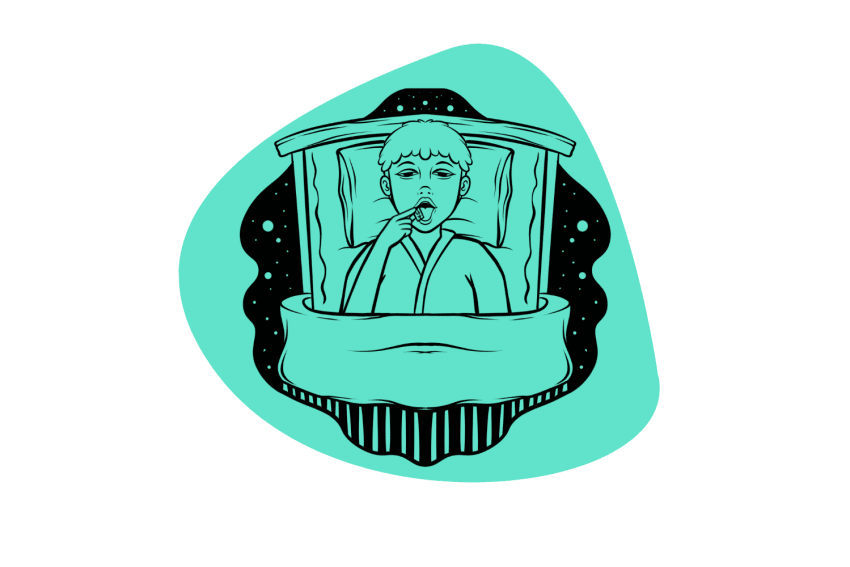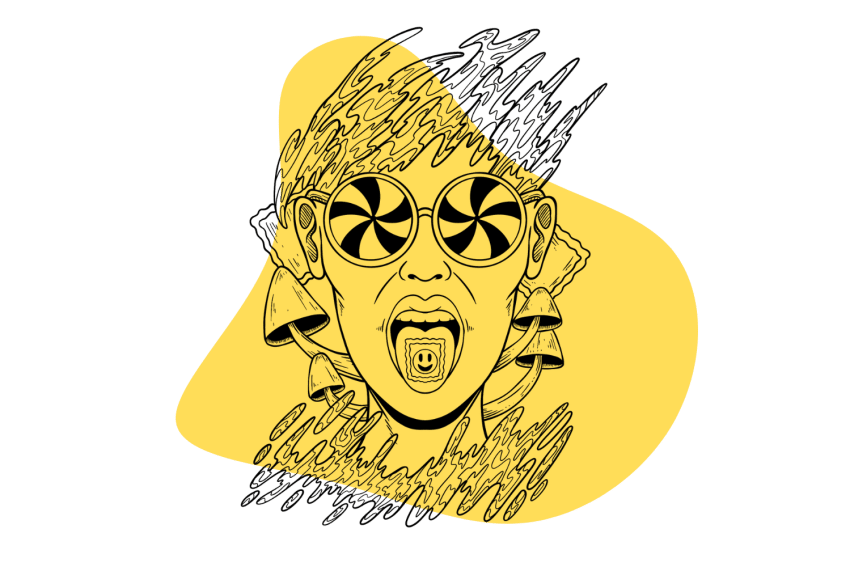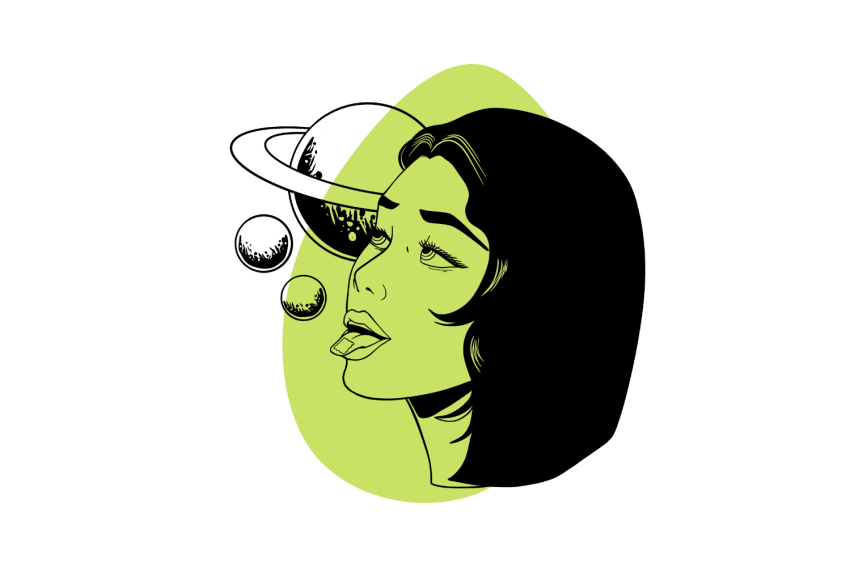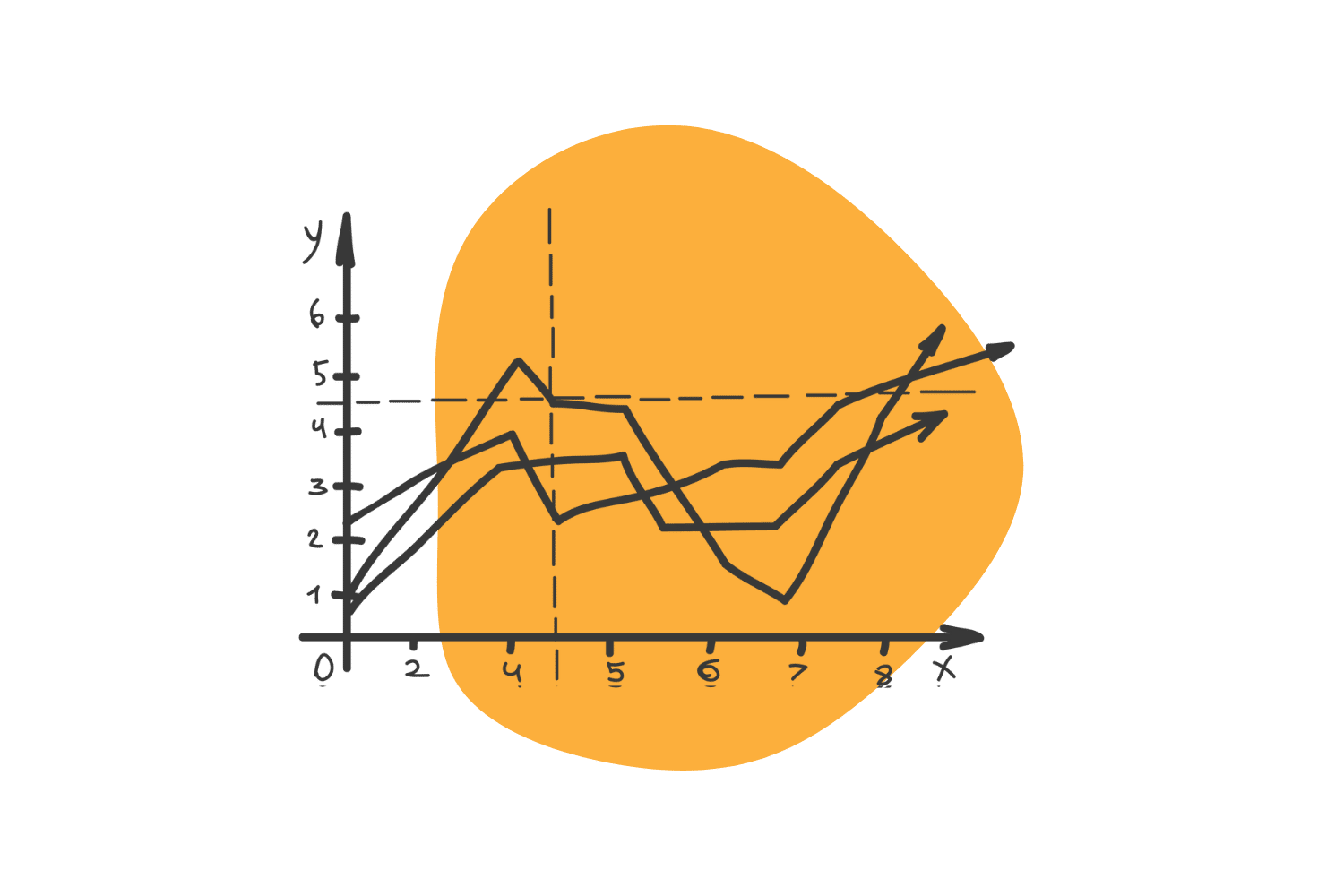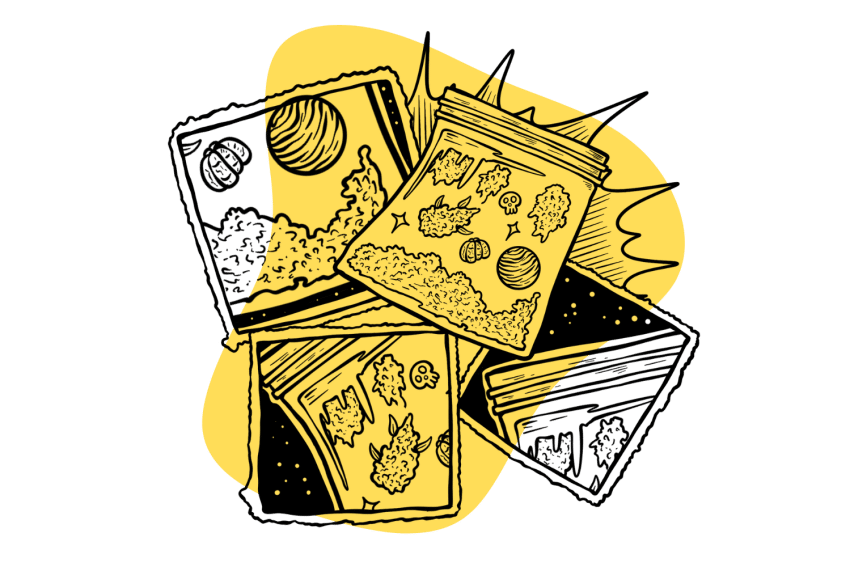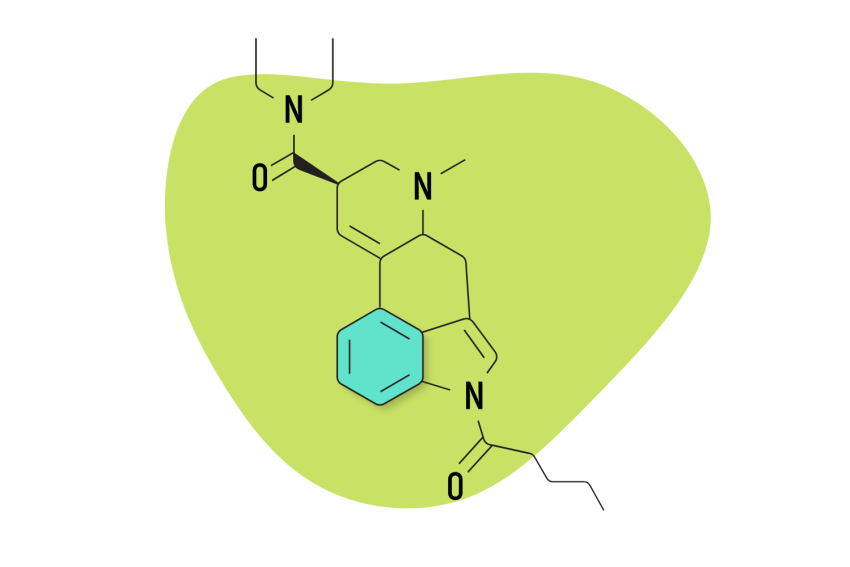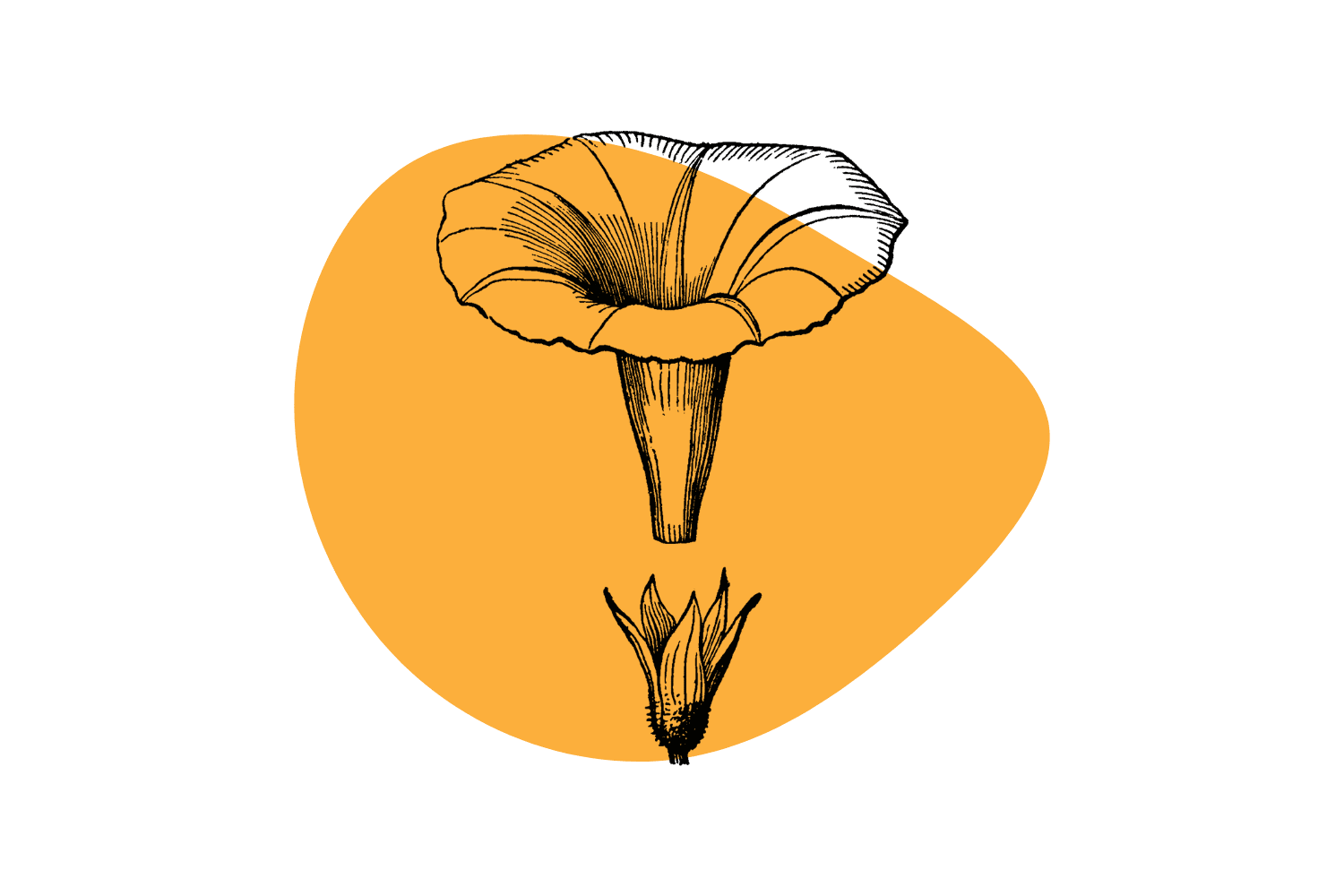What Are N-Bombs? (25-I-NBOMe) — Avoid This Psychedelic
Psychedelic? Yes. Dangerous? Also yes.
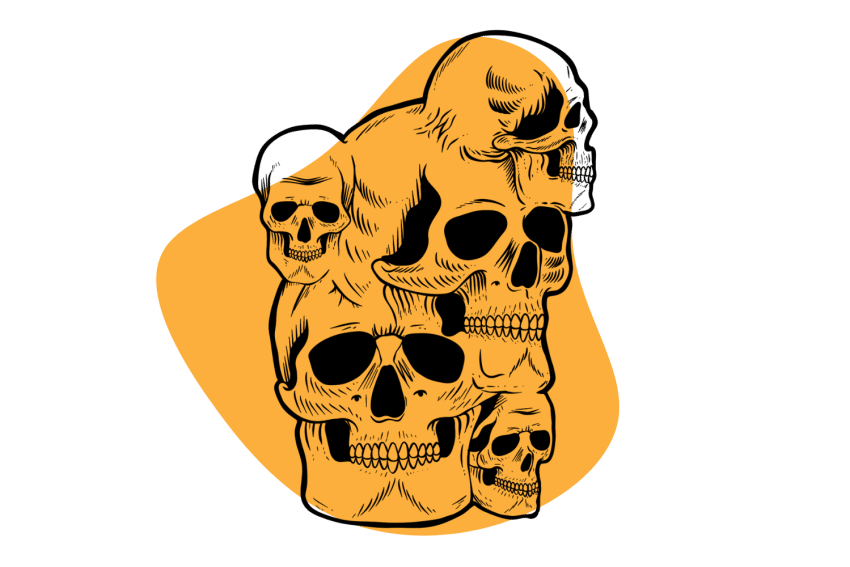
There’s never been a documented overdose on LSD, magic mushrooms, or mescaline — but there have been dozens of overdoses on a new psychedelic chemical called NBOMe.
Often sold as LSD, NBOMe drugs are becoming much more common on the market.
Here, we’ll cover everything you need to know about NMOMe class of drugs and what makes them so dangerous.
What Are N-Bombs (NBOMe)?
NBOMe (N-bombs) are a class of psychedelic drugs within the greater phenethylamine family. There are dozens of different NBOMe compounds in this group, but the most common, by far, is a chemical called 25I-N-BOMe.
These compounds work through the same mechanisms as LSD, DMT, psilocybin, and mescaline. They activate the 5-HT2A and 5-HT2C serotonin receptors — causing the characteristic hallucinations.
Unlike these other psychedelics, NBOMe is much less likely to lead to introspective thoughts than other psychedelics. They have a strong visual component but lack the spiritual or empathetic effects inherent to LSD or magic mushrooms.
Chemically, NBOMe is more closely related to mescaline, but it’s more often used as an alternative to LSD because it’s potent enough to be dosed on blotter squares.
Unlike acid, NBOMe has a potent bitter flavor — which is one of the only ways to tell if you’ve mistakenly taken NBOMes instead of acid.
The bottom line is that NBOMe is unpredictable and dangerous. The dose is very small. There’s very little difference between a safe dose and a toxic dose.
With the availability and low cost for other, safe psychedelics, there’s no need to take the high risk involved with using NBOMe.
N-Bombs: Specs & Technical Details
| Chemical Name | 25I-NBOMe |
| Level of Risk | High |
| Street Names | Cimbi-5, 25I, Smile, Wizard |
| Most Common Side-Effects | Anxiety, paranoia, psychosis |
| Duration of Effects | 6–10 Hours |
| Legality | Illegal |
Where Did NBOMe Come From?
NBOMe is a completely synthetic compound not found anywhere in nature (that we know of).
It was first discovered by a researcher at the Free University of Berlin named Ralf Heim. However, Heim didn’t publicize the compound and has never taken part in any interviews on the topic. The man that brought NBOMe to the public sphere was David Nichols at Purdue University. He studied the compound and documented its psychedelic profile — which he then published for the world to see.
NBOMe is essentially an analog of an analog.
In the 1960s and 70s, a man named Alexander Shulgin — often referred to as the father of psychedelics — started systematically altering the chemical structure of known psychedelics in search of new hallucinogenic compounds. He’s directly responsible for creating and documenting well over 120 new research psychedelics.
One of the compounds he created was called 2CI — which is an analog of mescaline.
Ralf Heim then created a series of related compounds by modulating the chemical structure of 2CI — which are referred to as NBOMe.
N-Bombs as Counterfeit Acid
One of the biggest dangers with buying LSD these days is the risk of unethical manufacturers swapping NBOMe compounds for LSD.
Both substances look the same when sold in their blotter paper form, despite having no relationship with each other. These are completely separate compounds.
Adulterants like this is why it’s important to test your LSD.
Related: Learn How to Test Your LSD With Safe Test Kits.
LSD is completely flavorless, but NBOMe has a strong metallic or bitter flavor. Fortunately, this makes it a little bit easier to detect counterfeit acid.
The saying goes, “if it’s bitter, it’s a spitter” — meaning that if you take a tab of “LSD” and find it to be very bitter, spit it out; you’ve probably taken NBOMe instead of LSD.
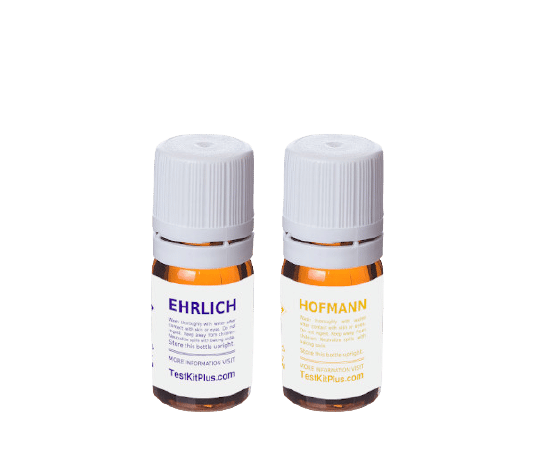
How to Test Your Acid For N-Bomb Substances
It’s always a good idea to test a sample of the compound you plan to use before trying. There are too many counterfeit drugs on the market these days to trust any of it — no matter where it comes from. Many times even the dealers themselves don’t know when their drugs have been adulterated. So even if you trust your dealer, be cautious, and test your LSD.
To test LSD blotters, you’ll need a test reagent — called Ehrlich’s reagent.
This test comes in a small bottle of liquid that reacts in the presence of indole substances (such as LSD) but won’t react with NBOMe substances, which are completely different chemicals.
To prepare your test, cut off a corner of your LSD and place a drop of the reagent on the sample. If it turns purple, it means you’ve got LSD. If there’s no reaction, it means whatever you have in front of you is not LSD. While this doesn’t prove it’s NBOMe, it’s still considered unsafe to use.
The Risks of N-Bombs
The more common NBOMe becomes, the more frequently we’re seeing cases of deaths from the substance. Most people who use this substance don’t even know that they’ve taken it.
LSD entered a global shortage in 2016 and 2017, which had many illicit suppliers turn to NBOMe as an alternative. Many of them have stuck with it. Since then, many of them have stuck with it because it’s much cheaper to produce than LSD.
Looking through case studies on NBOMe-related deaths, there are two common ways it can become lethal:
- Death from side-effects of psychotic episodes (suicidal or accidental death)
- Death from overdose (stroke, heart failure, or kidney failure)
It’s still unclear exactly what makes NBOMe so toxic. The main theory is that NBOMe stimulates the release of thromboxane A2 (TXA2), which can lead to the formation of a blood clot.
To add insult to injury, NBOMe also constricts the blood vessels — making it even more likely for a clot to block blood flow completely — potentially leading to stroke or heart failure.
Even non-lethal doses of NBOMe can leave lasting side effects. It’s been known to cause ventricular fibrillation, psychosis, renal failure, rhabdomyolysis, and vascular disease — sometimes after a single dose [1].
The most commonly reported features of acute NBOMe toxicity include tachycardia (96%), hypertension (62%), aggression (48%), seizures (37%) and hyperthermia (27%) [2].
Signs of N-Bombs Overdose
- Vomiting
- Loss of consciousness
- Severe agitation
- Inability to speak or communicate
- Rapid heart rate
- High blood pressure
- Seizures
- Psychotic episodes & attempts at suicide
- Hyperthermia

Side Effects of N-Bombs
Although this drug has been causing many deaths over the last few years, it’s still rare. There are a lot more cases of near-death experiences involving a trip to the hospital.
Most people who take N-bombs experience some side effects. The most common, by far, is anxiety and paranoia. Users often report being forced into a panicked and paranoid state — some of which last several hours at a time.
The most common side effects of N-bombs include:
- Agitation
- Anxiety & paranoia
- Delerium & psychosis
- Aggression
- Insomnia
- Nausea & vomiting
- High blood pressure
- Dizziness
- Ringing in the ears
- Heart attack or stroke
What’s The Dose of N-Bombs?
One of the main reasons N-bombs are so dangerous is the unpredictability of effects from one person to another and the narrow dosage range.
This compound is very potent. It takes far less than a milligram to produce powerful psychoactive effects lasting up to 10 hours.
The suggested dose for N-bombs is around 200 micrograms, but the safe dose can vary for everybody.
Most sources suggest that this drug’s danger zone starts around the 1000 micrograms (1 mg) mark — but there have been reports of near-deaths by people taking less than a milligram.
Compare this to LSD, which has been shown to have no lethal side effects even in doses up to 7000 mcg (the equivalent of 100 psychoactive doses at once). N-bombs can lead to death in doses as low as 2 times the standard dose.
Are N-Bombs Legal?
N-bombs are illegal throughout most of the world.
Some countries have created specific laws to outlaw the production, sale, and possession of N-bombs — others rely on pre-existing bans on any newly developed psychoactive drug.
There are no countries currently that permit the use of N-bombs.
In the United States, N-bombs are classified as a Schedule I drug — placing it among the same category as heroin, LSD, and cocaine.
Related: List of Legal Psychoactive Substances Around The World.
How N-Bombs Work
N-bombs are powerful serotonergic drugs with a similar mechanism of action to MDMA (ecstasy), cathinones, and other amphetamines. However, the affinity for this compound to activate the 5-HT2A serotonin receptors is what makes it so much more psychoactive than MDMA or other stimulant drugs. This drug’s effects are more similar to LSD and DMT due to its focus on the 5-HT2A receptor.
Other receptors N-bombs have been shown to interact with include 5-HT2B, 5-HT2C, 5-HT6, mu-opioid, and kappa-opioid receptors.

Key Takeaways: Why You Should Avoid N-Bombs
N-bombs are a new synthetic phenethylamine-based psychedelic with vague similarities to mescaline. Its effects and method of consumption are most similar to LSD — which has led many black market drug dealers to sell the drug under the guise of acid.
N-bombs are not a safe alternative to LSD — and the effects are much less enjoyable and insightful than acid. N-bombs produce the same visuals as acid but lack the benefits of the introspective or empathetic experience.
There are many negative side effects from using N-bombs, many of which still have no identifiable cause. The effects are highly unpredictable, and the dosage range is so narrow — it’s easy for people to take too much — leading to severe side effects, hospitalization, or death.
There’s no reason to use N-bombs when there are so many other psychedelics that do the same thing, only better, and without the risk. This includes LSD, DMT, mescaline, or psilocybin mushrooms.
Because of the risk of N-bomb adulterants, it’s important to always test your LSD before you take it to make sure it’s no NBOMe.
Subscribe To Get a Weekly Dose of Psychedelics In Your Inbox
References
- Ivory, S. T., Rotella, J. A., Schumann, J., & Greene, S. L. (2022). A cluster of 25B-NBOH poisonings following exposure to powder sold as lysergic acid diethylamide (LSD). Clinical Toxicology, 1-4.
- Wood, D. M., Sedefov, R., Cunningham, A., & Dargan, P. I. (2015). Prevalence of use and acute toxicity associated with the use of NBOMe drugs. Clinical toxicology, 53(2), 85-92.

